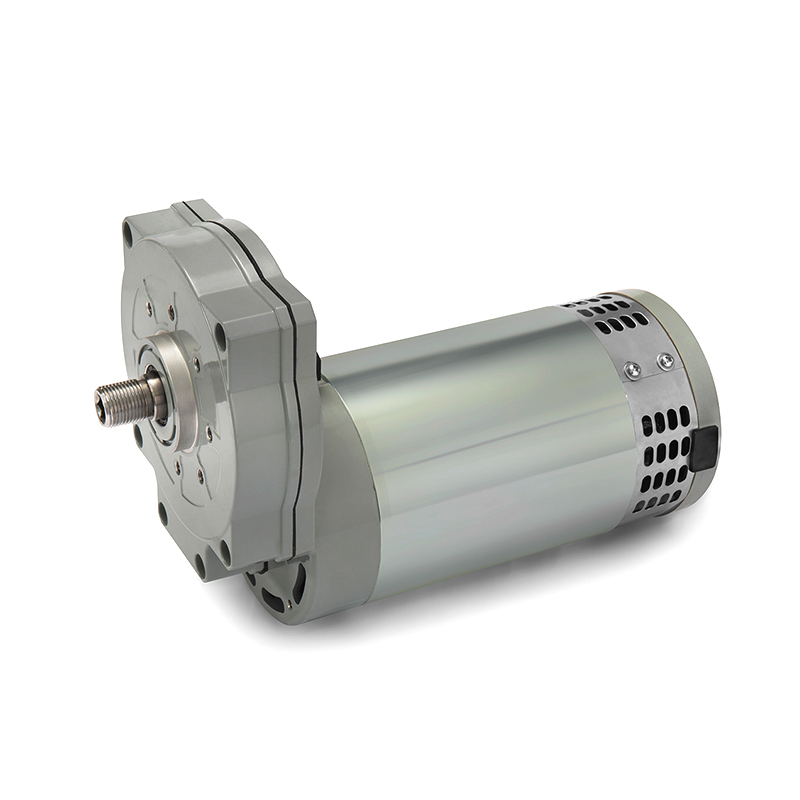Clean power "core" engine: performance innovation and application prospects of cleaning equipment motors
In modern urban life and industrial production, cleaning work is no longer just physical work, but also requires intelligent and mechanized support. Whether it is a floor scrubber, a vacuum cleaner, a high-pressure cleaner, or a sweeping robot, its core power source is inseparable from a key component-the cleaning equipment motor. As the "heart" of the whole machine performance, the quality of the motor directly determines the suction, efficiency, life and energy consumption performance of the cleaning equipment.
The motors used in cleaning equipment can be mainly divided into the following categories:
Brushed DC Motor
Low cost, simple structure, large starting torque, common in low-end cleaning equipment, but the carbon brush is easy to wear and need to be replaced regularly.
Brushless DC Motor (BLDC)
High efficiency, low noise, long life, gradually become the mainstream configuration of high-end cleaning equipment.
Universal Motor
Can be used for AC and DC, strong starting force, moderate price, suitable for small vacuum cleaners and other household equipment.
AC Induction Motor
Strong stability, commonly used in large floor scrubbers and industrial cleaning equipment, low noise but large size.
A high-quality cleaning equipment motor should have the following core performances:
High speed and high suction: Especially in vacuum and blowing equipment, high-speed motors mean stronger cleaning ability.

Low noise operation: Especially suitable for shopping malls, office buildings and other environments, with high requirements for quietness.
High temperature resistance and corrosion resistance: It is easy to contact moisture and chemicals during the cleaning process, and the motor must have good sealing and protection level.
Energy saving and high efficiency: Energy-saving motors not only reduce operating costs, but also are more in line with the development direction of green environmental protection.
Long life and stability: Reduce maintenance frequency, improve user experience and equipment reliability.
Cleaning equipment motors are widely used in:
Household cleaning equipment: such as vacuum cleaners, sweeping robots, window cleaners, etc., require miniaturization and low noise.
Commercial cleaning equipment: such as hand-push/riding floor scrubbers, carpet cleaning machines, etc., emphasize strong power and continuous working ability.
Industrial cleaning equipment: such as high-pressure cleaners and industrial vacuum cleaners, which are used in factory workshops and heavy industrial environments, have more stringent requirements on motors.
Cleaning equipment in the medical and food fields: special motors with explosion-proof and antibacterial designs are required.
Intelligent drive control: The motor will be deeply integrated with sensors and control systems to achieve functions such as automatic speed regulation and intelligent detection.
Lightweight and modular design: It is convenient for equipment assembly and maintenance, and improves the flexibility and scalability of equipment.
Green energy-saving technology: High-efficiency motors will become the mainstream of the market, meeting international energy-saving standards such as IE3 and IE4 levels.
Increased demand for customization: According to different cleaning scenarios, companies are more inclined to choose motor solutions with customized speed, power, and voltage ranges.
As the power source behind the cleaning industry, cleaning equipment motors not only promote the upgrading of equipment performance, but also represent the future direction of environmental protection, high efficiency, and intelligence. For cleaning equipment manufacturers, choosing a high-quality motor is a key step in creating differentiated competitiveness. In the future, with the refinement of urban management and the popularization of intelligent manufacturing, the cleaning motor industry will usher in a broader development space.
-
Feedback
Hotline:0086-15869193920
Time:0:00 - 24:00


 English
English Deutsch
Deutsch italiano
italiano 中文简体
中文简体












